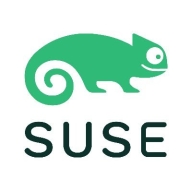

SUSE Linux Enterprise and Amazon FreeRTOS target different segments, with SUSE leading in enterprise readiness and Amazon FreeRTOS excelling in IoT integration. SUSE Linux Enterprise maintains an edge in enterprise settings due to its scalability and support, while Amazon FreeRTOS appeals more to IoT device manufacturers.
Features: SUSE Linux Enterprise provides scalability, security, and virtualization support for robust enterprise IT environments. It delivers a rich set of management tools to enhance productivity. Amazon FreeRTOS focuses on small, resource-constrained devices, offering lightweight real-time processing and seamless AWS cloud integration for IoT applications.
Ease of Deployment and Customer Service: SUSE Linux Enterprise offers extensive customer support and a well-established deployment process, beneficial for enterprises requiring high service levels. It includes comprehensive documentation and support channels. Amazon FreeRTOS provides streamlined deployment for embedded devices and benefits from AWS's documentation and community support for seamless IoT connectivity.
Pricing and ROI: SUSE Linux Enterprise involves higher upfront costs due to enterprise-level licensing but offers significant ROI with its stable infrastructure. Amazon FreeRTOS, being open source, has low initial costs and leverages AWS services for additional expenses, making it cost-effective for IoT-focused projects.

Amazon FreeRTOS (a:FreeRTOS) is an open source operating system for microcontrollers that makes small, low-power edge devices easy to program, deploy, secure, connect, and manage. Amazon FreeRTOS extends the FreeRTOS kernel, a popular open source operating system for microcontrollers, with software libraries that make it easy to securely connect your small, low-power devices to AWS cloud services like AWS IoT Core or to more powerful edge devices running AWS IoT Greengrass.
A microcontroller (MCU) is a single chip containing a simple processor that can be found in many devices, including appliances, sensors, fitness trackers, industrial automation, and automobiles. Many of these small devices could benefit from connecting to the cloud or locally to other devices. For example, smart electricity meters need to connect to the cloud to report on usage, and building security systems need to communicate locally so that a door will unlock when you badge in. Microcontrollers have limited compute power and memory capacity and typically perform simple, functional tasks. Microcontrollers frequently run operating systems that do not have built-in functionality to connect to local networks or the cloud, making IoT applications a challenge. Amazon FreeRTOS helps solve this problem by providing both the core operating system (to run the edge device) as well as software libraries that make it easy to securely connect to the cloud (or other edge devices) so you can collect data from them for IoT applications and take action.
SUSE Linux Enterprise offers features like YaST for server management, seamless integration with Oracle and SAP, and a robust security setup. Renowned for stability, it efficiently supports workstations, SAP workloads, and cloud migrations across diverse industries.
SUSE Linux Enterprise is known for its lightweight design, high performance, and ease of installation. Its flexible architecture supports extensive documentation and efficient patching. The system uses the BTRFS file system for effective virtualization, and community support is significant. However, challenges include package updates causing conflicts, difficult initial setup and software management, high pricing, and support response times. Improvements in security compliance, cloud integration, hardware compatibility, and documentation are also needed.
What are SUSE Linux Enterprise's important features?
What benefits should users expect from using SUSE Linux Enterprise?
Industries like healthcare and banking use SUSE Linux Enterprise for secure transactions and structured application deployment. It is also a choice for organizations involved in testing, automation, and web development, offering support for SAP HANA integration and facilitating cloud migrations.
We monitor all IoT Operating Systems (OS) reviews to prevent fraudulent reviews and keep review quality high. We do not post reviews by company employees or direct competitors. We validate each review for authenticity via cross-reference with LinkedIn, and personal follow-up with the reviewer when necessary.